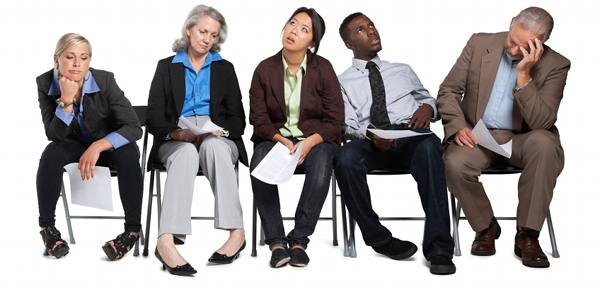Body Language Tricks That Give You Power

Luckily, understanding body language cues can help you project confidence and avoid weakness. Tonight, Brain Games investigates the science of power poses; and these five moves equal dominance:
1. Show your thumbs.
Do you fold your hands or fidget with your fingers when you speak? Pay careful attention to your thumbs. The thumb is your dominant finger, strongest in motor function, and its movement can reveal to others how you’re feeling. When you’re feeling confident or powerful, your hands literally become more territorial, expanding the space between your fingers.
On the flip side, this space disappears when you feel insecure or stressed, causing you to tuck your thumbs under your fingers. As a result, others may see you as fearful or lacking confidence if your hands are fidgeting and your thumbs hidden, as seen in this woman below.
2. Teepee your fingers.
If your hands dictate how others judge your confidence, teepeeing your fingers is the ultimate power play.
A popular move among world leaders, placing your hands in a steeple gesture signals confidence and dominance over others, indicating that you’re thinking or evaluating something. To achieve this posture, lightly touch your fingertips together with your hands pointing up, in the shape of a church’s steeple, like the man below. The light touch is important – using this posture too forcefully can convey arrogance. Similarly, pointing your hands downward in this motion can show that you’re attentive and listening to someone, a move you also may want to use.
3. Hold your head high – and don’t touch your neck.
If you’re feeling nervous, focus on keeping your hands planted in front of you. Touching your neck is a common self-soothing action people use in responding to stress. Your neck hosts nerve endings that reduce your blood pressure and lower your heart rate when stroked, so people instinctually reach for their necks when they’re nervous and need to calm down. When you rub the back of your neck, fiddle with a necklace or fix your tie, you’re signaling to others that you’re in distress.
Touching your neck isn’t the only way to signal nerves. When you’re lacking confidence in your situation, your neck even starts to disappear, as your shoulders rise and your head sinks in. Neck shrinking is also a cue for lying or deception. So if you’re feeling nervous in an unpleasant situation, fight the urge to behave like this distressed-looking man below. Keep your hands away from your neck and hold your head high.
4. Take up space.
Posture is another crucial body language cue. Taking up space by making yourself larger indicates power, while shrinking into your chair or slumping over a smartphone dictates the opposite.
Researchers have found that posing expansively results in elevated levels of testosterone, the hormone linked to confidence and power, and decreases cortisol levels, which may lower anxiety. Another recent Harvard study concluded that that practicing expansive poses before a high-stress setting, like a job interview or presentation, can improve performance.
If you want to command respect from others, stand or sit up straight and keep your arms uncrossed and away from your sides. However, expanding your body too much – like this man below – can indicate aggression. Be wary of encroaching on other people’s personal space.
5. Stand up.
Elevating yourself over other people is a serious power pose. Standing commands attention and respect from others, while sitting down is more passive.
If you’re really trying to dominate in a situation, stand and lean slightly forward, placing your hands down on a table. Whether you’re finishing a presentation, negotiating a situation or closing a deal, standing and leaning forward shows to others that you’re in a position of dominance.















































